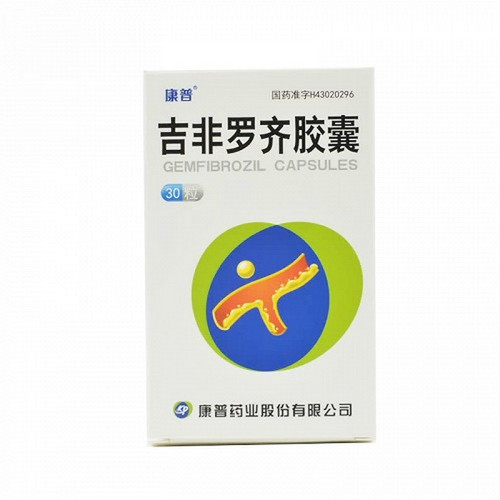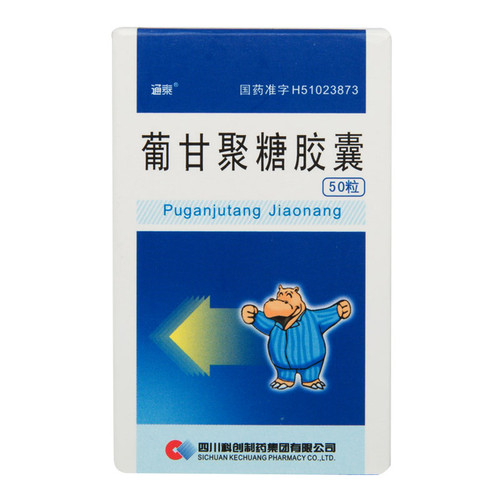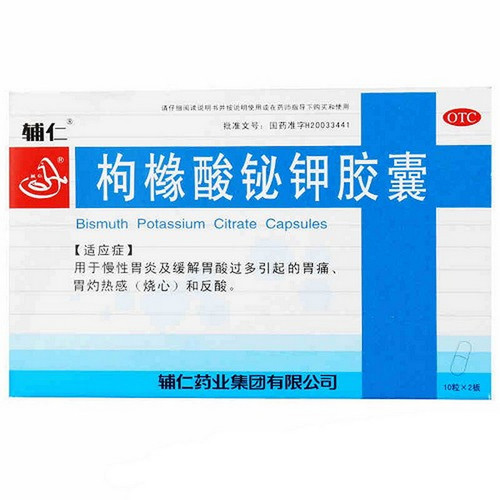Product Overview
[Drug Name]
Generic Name: Gemfibrozil Capsules
Trade Name: Bidi
English Name: Gemfibrozil Capsules
Chinese Pinyin: Ji Fei Luo Jiao Nang
[Ingredients]
The main ingredient of this product is Gemfibrozil.
[Properties]
This product is a white powder.
[Indications]
Indicated for primary hyperlipidemia.
[Dosage and Administration]
Usual Adult Dosage: Oral: 0.3-0.6g (1-2 capsules) twice daily, 30 minutes before breakfast and dinner.
[Adverse Reactions]
1. The most common adverse reactions are gastrointestinal discomfort, such as indigestion, anorexia, nausea, vomiting, fullness, and stomach discomfort. Other less common adverse reactions include headache, dizziness, fatigue, rash, itching, and impotence. 2. Occasionally, cholelithiasis or myositis (myalgia and fatigue) may occur. This product is a clofibric acid derivative and may cause myositis, myopathy, and rhabdomyolysis, leading to elevated blood creatine phosphokinase. Rhabdomyolysis, primarily manifested by myalgia accompanied by elevated blood creatine phosphokinase and myoglobinuria, can also lead to renal failure, but this is rare. The risk of myopathy is increased in patients with nephrotic syndrome or other renal impairment leading to hypoalbuminemia, or in those with hyperthyroidism. 3. Liver function tests (elevated aminotransferases, lactate dehydrogenase, bilirubin, and alkaline phosphatase) may occasionally be abnormal, but these levels return to normal after discontinuation of the drug. 4. Mild anemia and decreased white blood cell count may occasionally occur, but these symptoms can be stabilized with long-term use. In some cases, severe anemia, leukopenia, thrombocytopenia, and bone marrow suppression may occur.
[Contraindications]
1. Contraindicated in patients with hypersensitivity to gemfibrozil. 2. Contraindicated in patients with gallbladder disease or cholelithiasis, as this product may exacerbate gallbladder disease symptoms. This product is contraindicated in patients with hepatic impairment or primary biliary cirrhosis, as it may increase cholesterol excretion and raise already elevated cholesterol levels. It is contraindicated in patients with severe renal impairment, as this product may cause rhabdomyolysis and severe hyperkalemia. It is also contraindicated in patients with nephrotic syndrome, which causes hypoproteinemia, as it increases the risk of myopathy.
[Precautions]
1. This product is contraindicated in patients with severe hepatic or renal impairment. 2. For patients taking oral anticoagulants, the dosage should be reduced and the prothrombin time should be monitored regularly.
[Use in Special Populations]
Precautions for Children:
Studies on the use of this product in children are inadequate; the risks and benefits should be weighed when using this product.
Precautions for Pregnancy and Lactation:
High doses of this product have been reported in animals, but no human studies have been reported. It is unknown whether this product enters breast milk, so pregnant and lactating women should not take this product.
Precautions for the Elderly:
For elderly patients with impaired renal function, the dosage of this product should be appropriately reduced.
[Drug Interactions]
1. This product may significantly enhance the effects of oral anticoagulants. When used concomitantly with these drugs, the oral anticoagulant dosage should be reduced and the prothrombin time should be monitored frequently to adjust the anticoagulant dosage. Its mechanism of action is uncertain, but it may be due to the ability of this product to displace warfarin and other drugs from their protein binding sites, thereby enhancing their effects. 2. When used concomitantly with other highly protein-bound drugs, such as tolbutamide and other sulfonylurea hypoglycemic drugs, phenytoin, and furosemide, this product may also displace these drugs from their protein binding sites, leading to an enhanced effect. These drugs may include tolbutamide and other sulfonylurea hypoglycemic drugs, phenytoin, and furosemide. If these drugs are taken during lipid-lowering therapy, the dosage of these and other drugs should be adjusted. 3. The concomitant use of clofibric acid derivatives with HMG-CoA reductase inhibitors, such as lovastatin, for the treatment of hyperlipidemia increases the risk of severe muscle toxicity from both drugs, potentially causing myalgia, rhabdomyolysis, and elevated blood creatine phosphokinase. Therefore, concomitant use should be avoided. 4. If this product is used in combination with bile acid-binding resins, such as colestipol, gemfibrozil should be taken at least 2 hours before or 2 hours after these medications. Bile acid-binding drugs can bind to other concurrently taken medications, thereby affecting their absorption. 5. This product is primarily excreted via the kidneys. When used in combination with immunosuppressants, such as cyclosporine, it can increase the latter's blood concentration and nephrotoxicity, potentially worsening renal function. The dose should be reduced or discontinued. Caution should also be exercised when this product is used in combination with other nephrotoxic medications.
[Pharmacological Actions]
This product is a clofibric acid derivative, a lipid-regulating drug. Its mechanism of action for lowering blood lipids is not fully understood, but it may involve peripheral lipolysis, reduced hepatic uptake of free fatty acids, thereby reducing hepatic triglyceride formation, and inhibition of very low-density lipoprotein apolipoprotein synthesis, thereby reducing very low-density lipoprotein production. This product lowers triglycerides and increases high-density lipoprotein (HDL) levels. While it can slightly lower low-density lipoprotein (LDL) cholesterol levels, it may increase LDL levels in type IV hyperlipoproteinemia. A five-year placebo-controlled study showed that this product can reduce the incidence of severe sudden coronary death and myocardial infarction. Long-term administration of 10 times the human dose to rats increased the incidence of malignant liver tumors and benign testicular tumors.
[Storage] Store tightly closed in a cool, dry place.
[Specification] 0.3g
[Packaging Size] 0.3g*30s
[Expiration Date] 36 months
[Approval Number] National Medicine Standard H44021201
[Manufacturer] Company Name: Guangdong PID Pharmaceutical Co., Ltd.








